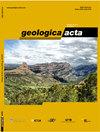Minorca, an exotic Balearic island (western Mediterranean)
IF 2
4区 地球科学
Q2 GEOLOGY
引用次数: 10
Abstract
Despite forming part of the Balearic group of islands, Minorca differs stratigraphically and structurally from Majorca and Ibiza: i) Paleozoic rocks are abundant in Minorca but are very scarce in Majorca and are absent in Ibiza. Eocene-Oligocene sediments are virtually absent in Minorca but crop out extensively in Majorca, ii) Contractional structures in Minorca differ in direction (aligned SW-NE in Majorca and Ibiza and N-S in Minorca) and in age from those in Majorca and Ibiza. In addition, Paleozoic deposits of Minorca do not correlate with those of Sardinia, where in addition the Triassic sediments are not very abundant. Contractional deformation in Sardinia is in part older (late Eocene-early Miocene) than in Minorca (early Miocene?). Given its Neogene clockwise rotation, Minorca cannot be considered a small block dragged by the early Miocene counter clockwise rotation of the Corsica-Sardinia block. Furthermore, the Paleozoic and Mesozoic stratigraphy of Minorca (siliciclasticlate Paleozoic rocks, Triassic Germanic facies and Jurassic carbonates) has affinities with that of the southern part of the Catalan Coastal Ranges. Thus, of all the Balearic islands, Minorca seems to have traveled the farthest during the Valencia Trough rifting with the result that it resembles an exotic island forming part of the Balearic foreland.米诺卡岛,一个充满异国情调的巴利阿里群岛(地中海西部)
尽管构成巴利阿里群岛群的一部分,但米诺卡岛在地层和结构上与马略卡岛和伊维萨岛不同:i)古生代岩石在米诺卡岛丰富,但在马略卡群岛非常稀少,在伊维萨群岛也不存在。始新世-渐新世沉积物在马略卡岛上几乎不存在,但在马略卡岛上大量出现,ii)马略卡群岛的收缩结构在方向(马略卡和伊维萨岛的SW-NE和南北向排列)和年龄上与马略卡、伊维萨不同。此外,米诺卡岛的古生代沉积物与撒丁岛的沉积物并不相关,撒丁岛上的三叠纪沉积物也不丰富。撒丁岛的收缩变形在一定程度上比米诺卡岛(中新世早期?)更古老(始新世晚期-中新世前期)。考虑到其上第三纪顺时针旋转,米诺卡岛不能被视为科西嘉-撒丁岛地块中新世早期逆时针旋转所拖累的一个小地块。此外,米诺卡岛的古生代和中生代地层(硅化晚古生代岩石、三叠纪日耳曼相和侏罗纪碳酸盐岩)与加泰罗尼亚海岸山脉南部的地层具有亲缘关系。因此,在所有巴利阿里群岛中,米诺卡岛似乎在巴伦西亚海槽裂谷期间走得最远,因此它就像一个形成巴利阿里前陆的奇异岛屿。
本文章由计算机程序翻译,如有差异,请以英文原文为准。
求助全文
约1分钟内获得全文
求助全文
来源期刊

Geologica Acta
地学-地质学
CiteScore
2.50
自引率
6.70%
发文量
13
审稿时长
>12 weeks
期刊介绍:
- Relevant conceptual developments in any area of the Earth Sciences.
- Studies presenting regional synthesis.
- Thematic issues or monographic volumes presenting the results from one or more research groups.
- Short papers reflecting interesting results or works in progress.
- Contributions and results from Research Projects, Workshops, Symposiums, Congresses and any relevant scientific activity related to Earth Sciences.
- Geologica Acta aims to stimulate rapid diffusion of results and efficient exchange of ideas between the widespread communities of Earth Science researchers (with special emphasis on Latinamerica, the Caribbean, Europe, the Mediterranean
 求助内容:
求助内容: 应助结果提醒方式:
应助结果提醒方式:


